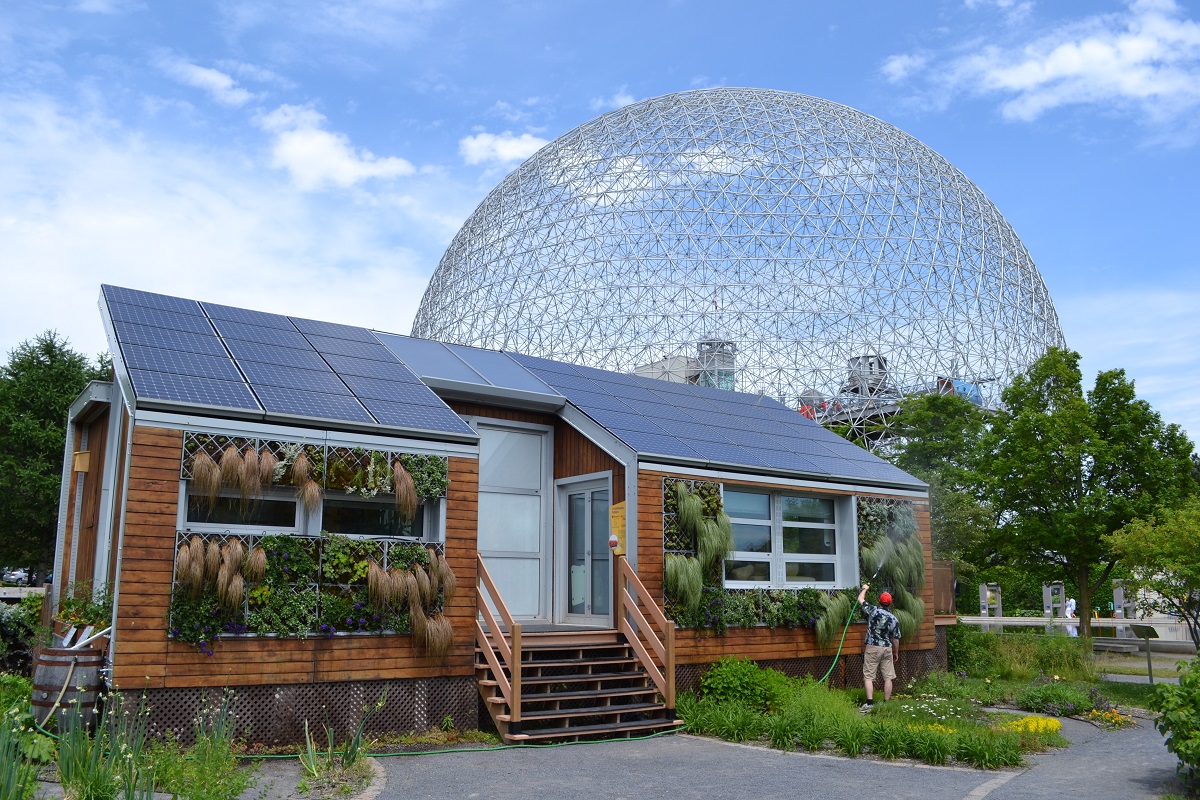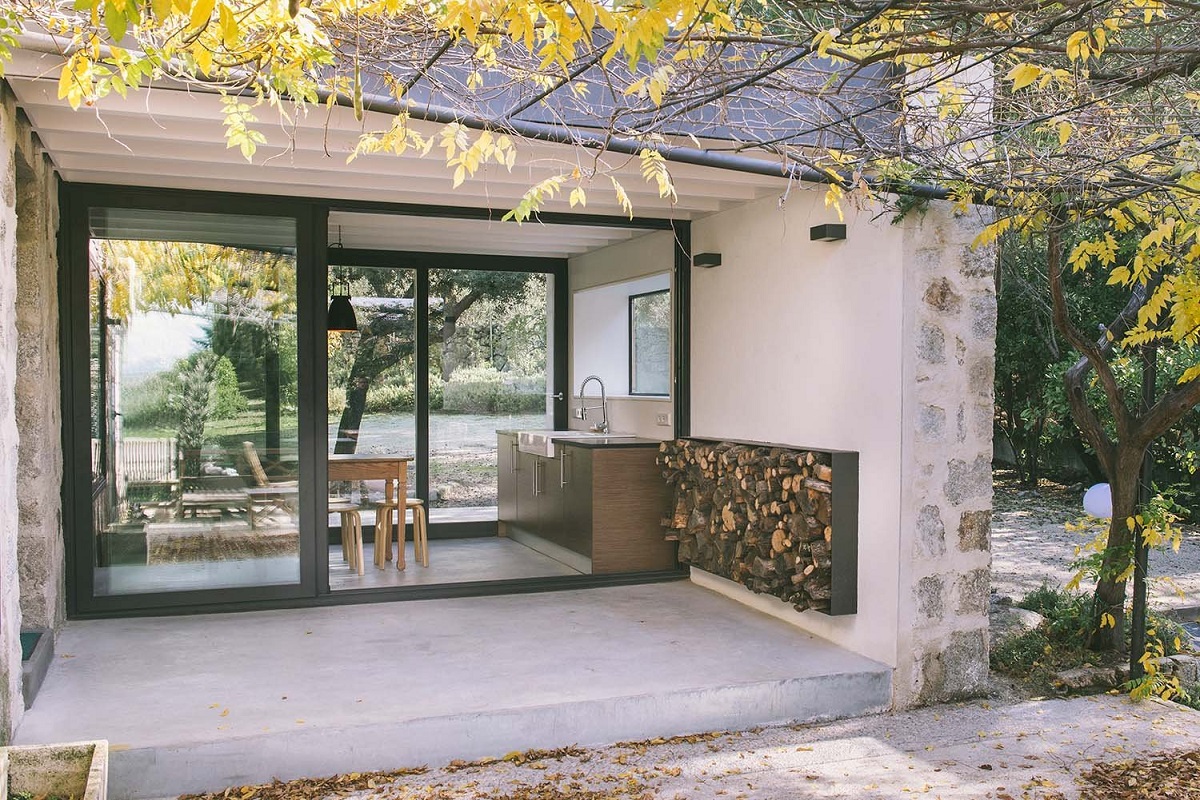
Reducing the environmental impact can start from the construction of homes and buildings. To care for these aspects is the ecological architecture. It is a type of architecture that designs homes and buildings to reduce environmental impact and optimize the use of natural resources.
In this article we are going to tell you about the characteristics of ecological architecture, the advantages and benefits for the environment.
What is ecological architecture

Green architecture is a type of design of buildings and spaces that takes into account the impact they have on the environment. It is a form of construction that seeks to minimize the environmental impact of construction. and whose main objective is to reduce the consumption of energy, water and materials.
To achieve an ecological architecture, it is necessary to take into account several aspects, such as the use of sustainable and renewable materials, the maximization of energy efficiency, the use of natural ventilation and air conditioning systems, the collection and use of solar and wind energy. , and proper waste management.
In addition, seeks creative and innovative solutions to reduce this impact. This can range from using recycled materials and implementing renewable energy systems, to creating green spaces and incorporating traditional and sustainable construction techniques.
Key features

One of the most important features is maximizing the use of natural light and ventilation. This is achieved by designing buildings to allow in as much natural light as possible, which helps to reduce electricity consumption and create a more pleasant and healthy environment for the people who occupy them. Similarly, ventilation systems are designed to make use of natural resources, such as wind, to create air circulation that helps maintain a comfortable temperature and reduce energy consumption.
The ecological architecture too focuses on the efficient use of water. This implies the implementation of rainwater collection systems for its reuse in non-potable tasks such as watering gardens or cleaning. The main objective is to reduce the consumption of drinking water in buildings through the use of water-saving technologies, such as taps and showers with low consumption.
Another characteristic of ecological architecture is the creation of green and biodiverse spaces. Green buildings can include gardens and green spaces that help reduce the heat island effect and create a more pleasant environment for the people who occupy them. These spaces can also be used to promote biodiversity, either through the creation of habitats for local fauna or the planting of native plant species.
Use of sustainable materials

There are a variety of eco-friendly materials that can be used to implement sustainable housing projects. The wood is probably one of the most famous buildings in architecture. However, we have less common but equally effective and sustainable materials such as cellulose, bamboo and wool.
However, there is an element that is not so popular but is widely used in this sustainable architecture. We talk about the cork. It is a great thermal and acoustic insulator, extracted directly from the bark of the trees, so it is not necessary to cut them down. In this type of architecture it is usually organized in panels.
Likewise, a fundamental element in construction is painting, very characteristic in these sustainable projects, since ecological variants are used, consisting of plant or mineral elements carefully selected to reduce the environmental impact and improve the air quality of the building.
Benefits of green architecture
The benefits of green architecture are many and varied. First of all, by reducing the environmental impact of constructions, you contribute to the protection of the environment and promote a more sustainable and healthy world for people and nature.
Green buildings are often more energy efficient, This reduces energy consumption and therefore costs less on electricity and gas bills. They can also be better for your residents, as they are designed to maximize natural light and fresh air circulation, which can help reduce health problems related to poor air quality and lack of natural light.
Another benefit of green architecture is that it can help create more pleasant and comfortable spaces. This is thanks to the fact that green buildings tend to be more aware of the climate and the environment in which they are located, and are designed to take advantage of the natural advantages of each place. For example, a green building located in a hot climate might have natural ventilation and shading to maintain a comfortable temperature without the need for air conditioning.
It cannot be argued that this type of architecture increases innovation and creativity in building design. By seeking sustainable and efficient solutions, architects and designers can develop new technologies and approaches that help create a more sustainable and enjoyable world for all.
current demand
In recent years, 42% of architects revealed that more and more clients are choosing sustainable green houses and they recognize that demand is a major factor influencing their sustainable building practices. Therefore, industry professionals believe that the main reason their clients request green buildings or residences is the growing awareness of environmental protection among citizens.
A study showed improvements in sustainable design in 2008, leading to greater acceptance among architects. From this it can be deduced that these professionals are recognized as sustainable or ecological architects.
More and more professionals in this industry are joining the construction of this type of sustainable eco-housing projects, since they have realized that the practice of this design has risen sharply due to strong customer demand. Apart from housing, Spain has built jewels of sustainable architecture in recent years, so everything points to an increase in the future.
I hope that with this information you can learn more about ecological architecture and its characteristics.